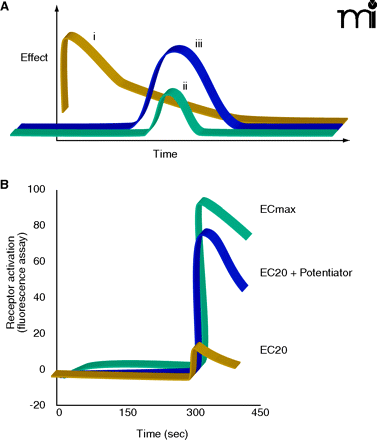
- Institution: Stanford Univ Med Ctr Lane Med Lib/Periodical Dept/Rm L109
- Sign In as Member / Individual
Schizophrenia

Why bother with allosteric modulation? (A) The response curve for an agonist analog (i) typically reflects pharmacokinetic parameters that fail to replicate the time course of the endogenous agonist (ii). On the other hand, because allosteric modulators, such as agonist potentiators (iii), act by definition to alter the interaction of the endogenous agonist with its receptor per se, the magnitude of the pharmacologically observed effect can be modulated without perturbation of the time course (or localization) of agonism. (B) Hundreds of thousands of compounds have been screened for biological activity at mGlu and mACh receptor subtypes. Allosteric modulators (here, potentiators) have been identified by their ability to raise levels of receptor activation at a given “effective concentration” (EC) of agonist. See text for details.


